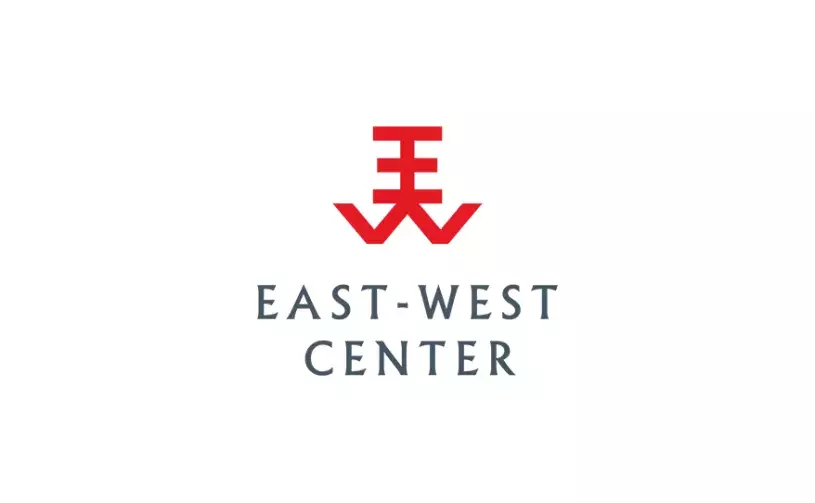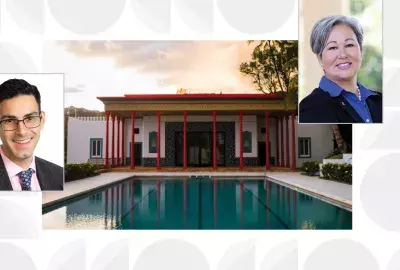
By Jefferson Fox, Jean Christophe Castella, and Kaspar Hurni
HONOLULU (Aug. 15, 2018)—Across Southeast Asia, traditional agriculture is giving way to the commercial production of high-value cash crops. And one of the most important of these new cash crops is rubber.
Although rubber (Hevea brasiliensis) is a native of the Amazon basin, today 97 percent of the world's natural rubber comes from Southeast Asia. As of 2014, rubber plantations covered 94,282 square kilometers (km2) of the Southeast Asian highlands, or 8 percent of a region that includes all of Cambodia and Laos, northwest Vietnam, northeast Thailand, Shan State in Myanmar, and Xishuangbanna Prefecture in southern Yunnan, China.

In the past, traditional farmers in much of this area practiced shifting cultivation, removing forest cover in small patches, growing crops for a few years, and then moving on and allowing the forest to regrow. Most are members of minority ethnic groups whose languages and customs differ from those of the majority populations. As ethnic minorities, they tend to lack political influence or economic clout.
What has happened to these local farmers as the land they cultivated for centuries is transformed into rubber plantations? In China, Thailand, and Vietnam, many have been able to grow rubber, and some have become wealthy. In Cambodia, Laos, and Myanmar, by contrast, traditional farmers are being squeezed out by large companies. Government policies and programs appear to make all the difference in who benefits from expanded rubber production and who does not.
China and Thailand: Flourishing smallholder production
In the early 1950s, Chinese researchers developed varieties of rubber suited to the environment of the Southeast Asian highlands, and the government introduced these new varieties in Xishuangbanna Prefecture on large-scale collective farms. In 1982, China dismantled farming communes and returned the land to individual farmers. Farmers in Xishuangbanna were granted long-term use rights to their land and received seedlings, technical support, and subsidies to plant rubber. Later, rubber farmers received food subsidies to cover the seven-year period before newly planted rubber trees become productive.
As of 2014, rubber plantations covered 6,182 km2, or 29 percent of Xishuangbanna Prefecture. During the expansion of rubber production, many Chinese rubber farmers have achieved unprecedented wealth. They can now send their children to secondary school and even university, buy insurance for retirement and healthcare, and take holidays in the city.
In Thailand, the government began promoting rubber in the northeast region in the 1970s. By 2014, rubber plantations covered 28,614 km2, or 9 percent of the region.
A state agency, the Offices of the Rubber Replanting Aid Fund (ORRAF), provides technical advice, seedlings, fertilizer, herbicides, and low-cost credit for labor costs. ORRAF also supports alternative income-generating activities to help farmers maintain their livelihoods before their rubber trees are ready to harvest.
At the community level, ORRAF supports the formation of growers’ organizations and cooperatives. As in Xishuangbanna, with secure tenure rights and the support of government programs, small-scale rubber farmers in northeast Thailand have greatly increased their household wealth.
Cambodia and Laos: Large-scale commercial enterprises
As of 2014, rubber plantations covered 29,743 km2 in Cambodia, or 15 percent of the entire country. One-half of this area was controlled by private companies that had received government land concessions.
The Cambodian government has drafted legislation to protect the land rights of small farmers and ethnic minorities, but these policies have not been effectively implemented. Illegal land purchases and the leasing of large economic concessions are increasing rapidly, often facilitated by local government officials in exchange for “commissions.”
The shift from subsistence to commercial agriculture in Cambodia has created a new source of income for some local families. In other communities, local farmers have lost their land to illegal speculators, and villagers are struggling to maintain control over their communal lands and forests in the face of growing outside pressures.
Rubber is a fairly new crop in Laos, and the government, lacking experience, has relied on external investment and expertise from state and private entrepreneurs in neighboring countries, particularly China, Vietnam, and Thailand. These external investments have triggered a huge increase in rubber production. In 2014, rubber plantations covered 7,656 km2, or 4 percent of the entire country.
In a context of poor governmental regulations and enforcement strategies, a large number of institutional arrangements have emerged. Concessions to grow rubber on state lands are negotiated by senior government officials, and large tracts are put under direct management by companies that have limited interaction with local populations. Plantation workers are frequently brought in from outside.
In other cases, outside companies are granted the right to negotiate contracts directly with local villagers. The farmers provide land, and the companies provide seedlings, fertilizer and other inputs, technical knowledge, and market access. The farmers may also provide labor, or the companies may hire workers. Profits are shared under a variety of arrangements. If farmers become too indebted during the seven years before their trees become productive, they can lose their land.
Some local farmers have been able to maintain control over production in the face of outside pressure, negotiating advantageous arrangements that limit the role of investors or even resisting companies’ offers altogether. Other farmers have fallen prey to unfavorable contracts and varying degrees of coercion. Some have lost their land with little or no compensation.
The Lao government placed a moratorium on new land concessions in 2007 and announced a second moratorium in 2012. The Cambodian government also froze new land grants in May 2012. These moratoriums appear to have slowed the expansion of rubber production. Another constraint has been the drop in world rubber prices. Prices crashed in 2008 and again in 2011, deteriorated until about 2014, and have fluctuated since then.
Making sure local farmers benefit from the transition to rubber
Throughout the uplands of mainland Southeast Asia, the global demand for natural rubber will continue to drive a transition from traditional farming systems to rubber plantations. The impact of this transition on local farmers varies, depending largely on government policies and programs.
With a seven-year delay between planting and first harvest, rubber is a long-term investment, so first and foremost, farmers must have secure, long-term access to their land. During the early years, they also need technical support, credit, transport, and marketing services. At the local level, sustained community building appears to be essential, and it may be useful to establish a national governing body to work closely with all sectors of the rubber industry.
The development of large-scale commercial rubber plantations in Cambodia and Laos has had adverse effects on local farmers, in some instances even driving them off their land. By contrast, experience in China’s Xishuangbanna Prefecture and northeast Thailand shows that appropriate government policies and support can create a viable smallholder rubber industry that moves rural households and communities out of poverty.
Jefferson Fox is Director of the Research Program at the East-West Center. He can be reached at [email protected]. Jean Christophe Castella is Research Director at the Institute de Recherche pour le Développement, and Kaspar Hurni is GIS and remote-sensing specialist at the East-West Center and the Centre for Development and Environment, University of Bern.
This East-West Wire is based on Jefferson Fox and Jean-Christophe Castella (2013), “Expansion of rubber (Hevea brasiliensis) in mainland Southeast Asia: What are the prospects for small holders,” Journal of Peasant Studies, 40(1): 155–70; and Kaspar Hurni and Jefferson Fox (2018) "The expansion of tree-based boom crops in mainland Southeast Asia: 2001 to 2014," Journal of Land Use Science.
This East-West Wire is available in PDF format.
##
The East-West Wire is a news, commentary, and analysis service provided by the East-West Center in Honolulu. All or any part of the Wire content may be used by media with attribution to the East-West Center or the person quoted. To receive Wire articles via email, subscribe here. For links to all East-West Center media programs, fellowships and services, see www.eastwestcenter.org/journalists.
The full list of East-West Wires produced by the Research Program is available on the East-West Center website. For more on the East-West Center Research Program, see www.eastwestcenter.org/research.
The East-West Center promotes better relations and understanding among the people and nations of the United States, Asia, and the Pacific through cooperative study, research, and dialogue.
Series editors:
Derek Ferrar
[email protected]
By Jefferson Fox, Jean Christophe Castella, and Kaspar Hurni
HONOLULU (Aug. 15, 2018)—Across Southeast Asia, traditional agriculture is giving way to the commercial production of high-value cash crops. And one of the most important of these new cash crops is rubber.
Although rubber (Hevea brasiliensis) is a native of the Amazon basin, today 97 percent of the world's natural rubber comes from Southeast Asia. As of 2014, rubber plantations covered 94,282 square kilometers (km2) of the Southeast Asian highlands, or 8 percent of a region that includes all of Cambodia and Laos, northwest Vietnam, northeast Thailand, Shan State in Myanmar, and Xishuangbanna Prefecture in southern Yunnan, China.

In the past, traditional farmers in much of this area practiced shifting cultivation, removing forest cover in small patches, growing crops for a few years, and then moving on and allowing the forest to regrow. Most are members of minority ethnic groups whose languages and customs differ from those of the majority populations. As ethnic minorities, they tend to lack political influence or economic clout.
What has happened to these local farmers as the land they cultivated for centuries is transformed into rubber plantations? In China, Thailand, and Vietnam, many have been able to grow rubber, and some have become wealthy. In Cambodia, Laos, and Myanmar, by contrast, traditional farmers are being squeezed out by large companies. Government policies and programs appear to make all the difference in who benefits from expanded rubber production and who does not.
China and Thailand: Flourishing smallholder production
In the early 1950s, Chinese researchers developed varieties of rubber suited to the environment of the Southeast Asian highlands, and the government introduced these new varieties in Xishuangbanna Prefecture on large-scale collective farms. In 1982, China dismantled farming communes and returned the land to individual farmers. Farmers in Xishuangbanna were granted long-term use rights to their land and received seedlings, technical support, and subsidies to plant rubber. Later, rubber farmers received food subsidies to cover the seven-year period before newly planted rubber trees become productive.
As of 2014, rubber plantations covered 6,182 km2, or 29 percent of Xishuangbanna Prefecture. During the expansion of rubber production, many Chinese rubber farmers have achieved unprecedented wealth. They can now send their children to secondary school and even university, buy insurance for retirement and healthcare, and take holidays in the city.
In Thailand, the government began promoting rubber in the northeast region in the 1970s. By 2014, rubber plantations covered 28,614 km2, or 9 percent of the region.
A state agency, the Offices of the Rubber Replanting Aid Fund (ORRAF), provides technical advice, seedlings, fertilizer, herbicides, and low-cost credit for labor costs. ORRAF also supports alternative income-generating activities to help farmers maintain their livelihoods before their rubber trees are ready to harvest.
At the community level, ORRAF supports the formation of growers’ organizations and cooperatives. As in Xishuangbanna, with secure tenure rights and the support of government programs, small-scale rubber farmers in northeast Thailand have greatly increased their household wealth.
Cambodia and Laos: Large-scale commercial enterprises
As of 2014, rubber plantations covered 29,743 km2 in Cambodia, or 15 percent of the entire country. One-half of this area was controlled by private companies that had received government land concessions.
The Cambodian government has drafted legislation to protect the land rights of small farmers and ethnic minorities, but these policies have not been effectively implemented. Illegal land purchases and the leasing of large economic concessions are increasing rapidly, often facilitated by local government officials in exchange for “commissions.”
The shift from subsistence to commercial agriculture in Cambodia has created a new source of income for some local families. In other communities, local farmers have lost their land to illegal speculators, and villagers are struggling to maintain control over their communal lands and forests in the face of growing outside pressures.
Rubber is a fairly new crop in Laos, and the government, lacking experience, has relied on external investment and expertise from state and private entrepreneurs in neighboring countries, particularly China, Vietnam, and Thailand. These external investments have triggered a huge increase in rubber production. In 2014, rubber plantations covered 7,656 km2, or 4 percent of the entire country.
In a context of poor governmental regulations and enforcement strategies, a large number of institutional arrangements have emerged. Concessions to grow rubber on state lands are negotiated by senior government officials, and large tracts are put under direct management by companies that have limited interaction with local populations. Plantation workers are frequently brought in from outside.
In other cases, outside companies are granted the right to negotiate contracts directly with local villagers. The farmers provide land, and the companies provide seedlings, fertilizer and other inputs, technical knowledge, and market access. The farmers may also provide labor, or the companies may hire workers. Profits are shared under a variety of arrangements. If farmers become too indebted during the seven years before their trees become productive, they can lose their land.
Some local farmers have been able to maintain control over production in the face of outside pressure, negotiating advantageous arrangements that limit the role of investors or even resisting companies’ offers altogether. Other farmers have fallen prey to unfavorable contracts and varying degrees of coercion. Some have lost their land with little or no compensation.
The Lao government placed a moratorium on new land concessions in 2007 and announced a second moratorium in 2012. The Cambodian government also froze new land grants in May 2012. These moratoriums appear to have slowed the expansion of rubber production. Another constraint has been the drop in world rubber prices. Prices crashed in 2008 and again in 2011, deteriorated until about 2014, and have fluctuated since then.
Making sure local farmers benefit from the transition to rubber
Throughout the uplands of mainland Southeast Asia, the global demand for natural rubber will continue to drive a transition from traditional farming systems to rubber plantations. The impact of this transition on local farmers varies, depending largely on government policies and programs.
With a seven-year delay between planting and first harvest, rubber is a long-term investment, so first and foremost, farmers must have secure, long-term access to their land. During the early years, they also need technical support, credit, transport, and marketing services. At the local level, sustained community building appears to be essential, and it may be useful to establish a national governing body to work closely with all sectors of the rubber industry.
The development of large-scale commercial rubber plantations in Cambodia and Laos has had adverse effects on local farmers, in some instances even driving them off their land. By contrast, experience in China’s Xishuangbanna Prefecture and northeast Thailand shows that appropriate government policies and support can create a viable smallholder rubber industry that moves rural households and communities out of poverty.
Jefferson Fox is Director of the Research Program at the East-West Center. He can be reached at [email protected]. Jean Christophe Castella is Research Director at the Institute de Recherche pour le Développement, and Kaspar Hurni is GIS and remote-sensing specialist at the East-West Center and the Centre for Development and Environment, University of Bern.
This East-West Wire is based on Jefferson Fox and Jean-Christophe Castella (2013), “Expansion of rubber (Hevea brasiliensis) in mainland Southeast Asia: What are the prospects for small holders,” Journal of Peasant Studies, 40(1): 155–70; and Kaspar Hurni and Jefferson Fox (2018) "The expansion of tree-based boom crops in mainland Southeast Asia: 2001 to 2014," Journal of Land Use Science.
This East-West Wire is available in PDF format.
##
The East-West Wire is a news, commentary, and analysis service provided by the East-West Center in Honolulu. All or any part of the Wire content may be used by media with attribution to the East-West Center or the person quoted. To receive Wire articles via email, subscribe here. For links to all East-West Center media programs, fellowships and services, see www.eastwestcenter.org/journalists.
The full list of East-West Wires produced by the Research Program is available on the East-West Center website. For more on the East-West Center Research Program, see www.eastwestcenter.org/research.
The East-West Center promotes better relations and understanding among the people and nations of the United States, Asia, and the Pacific through cooperative study, research, and dialogue.
Series editors:
Derek Ferrar
[email protected]
East-West Wire
News, Commentary, and Analysis
The East-West Wire is a news, commentary, and analysis service provided by the East-West Center in Honolulu. Any part or all of the Wire content may be used by media with attribution to the East-West Center or the person quoted. To receive East-West Center Wire media releases via email, subscribe here.
For links to all East-West Center media programs, fellowships and services, see www.eastwestcenter.org/journalists.







